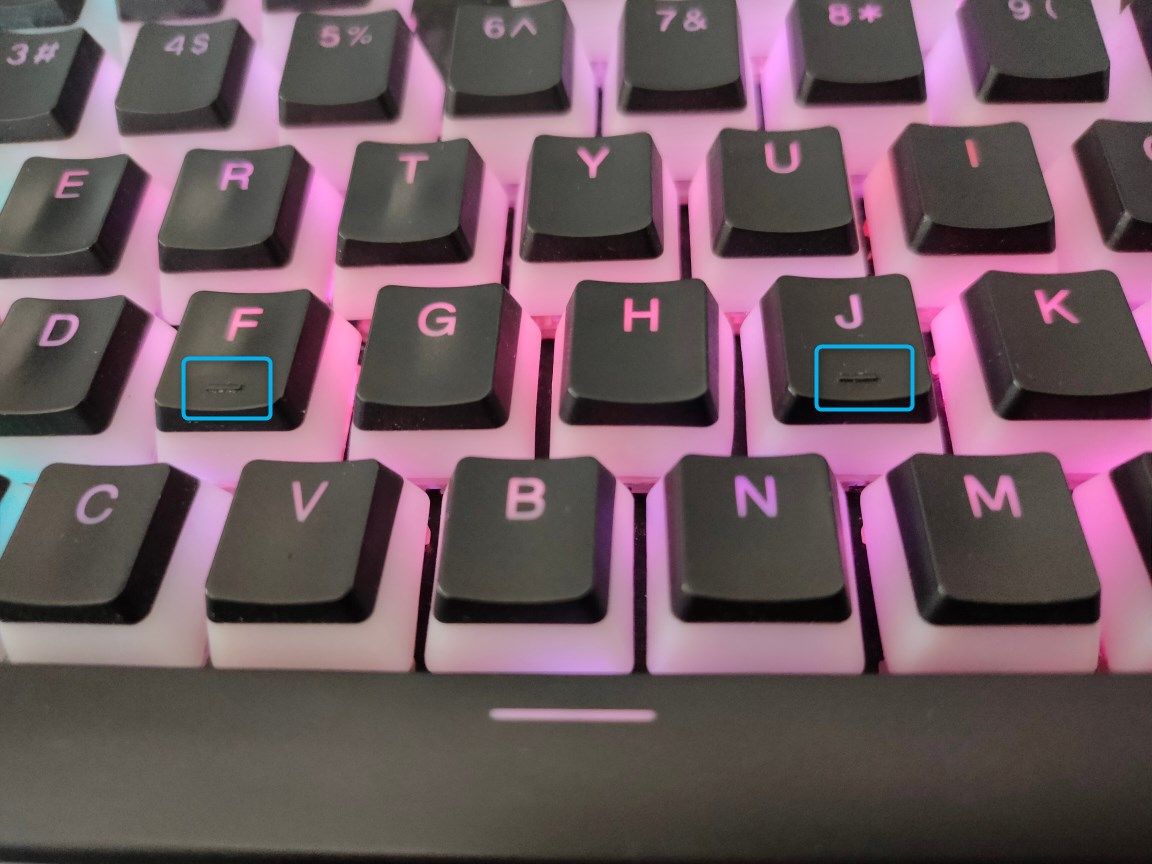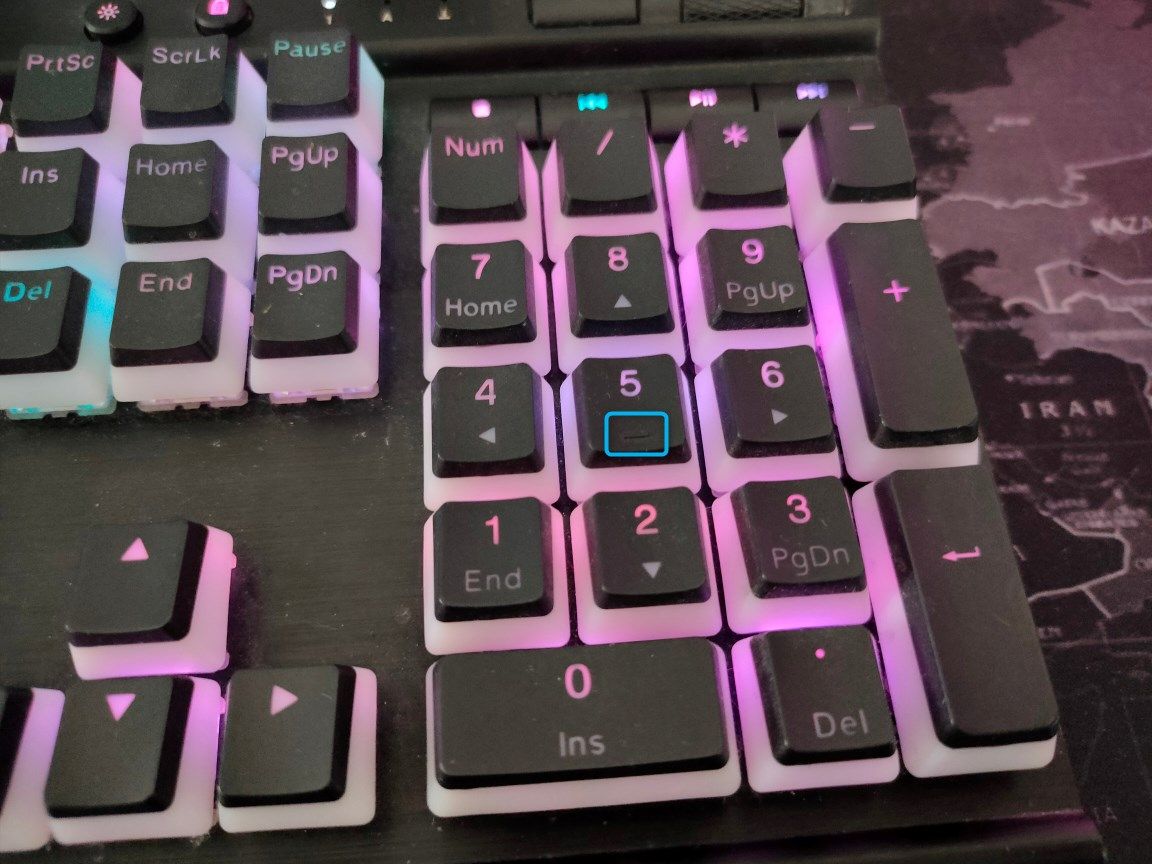Key Takeaways
- The bumps on the F and J keys help you find the keys without looking, which is a technique called touch typing.
- Learning how to touch type can speed up your workflow and improve typing accuracy.
- Practice is essential to improve typing speed and accuracy. Websites like TypeRacer make the learning experience more fun.
Have you ever noticed those little ridges or bumps that some keys on a keyboard have? Regardless of whether it’s a laptop, tablet, or computer keyboard, pretty much all of them have it. So, what’s the purpose of the bump?
The Bumps Help You Find Keys and Type Without Looking
Have you ever seen someone type really fast without ever having to look down? Although the skill is nothing short of amazing, it’s not magic; the person knows where all the keys on the keyboard are located by feeling for them and with the help of muscle memory. We call this technique touch typing.
Keys like Space, Ctrl, and Alt are easy enough to find without looking because they’re on the edge of the keyboard. As for the letter keys, that’s what the bumps are for. On standard QWERTY and QWERTZ keyboards, the bumps are always on the F and J keys.
Typists typically place their index fingers on these keys to orient themselves. The technique always stays the same, so switching from one keyboard to another wouldn’t slow down your typing speed.
In addition to the bumps on the F and J, keyboards with a number pad typically have a bump on the 5. The purpose here again is the same—the bump helps you locate the keys on a number pad without looking. The numbers are arranged in a 3 x 3 grid with a zero in the bottom left and a few additional keys around them. Fast typists typically use their middle finger rather than their index to find the bump on the 5.
Learning How to Touch Type Will Speed up Your Workflow
It’s no surprise that typing without looking comes with numerous advantages. For starters, you won’t have to switch attention to your keyboard to find the keys. You can continue looking at the screen and see what you’re typing, allowing you to focus on the meaning of what you’re typing rather than the individual letters. It’s also easier to spot and fix typos. Another overlooked benefit is that you’ll learn how to use keyboard shortcuts more efficiently. Still, the main advantage is typing speed.
Generally speaking, professionals type at a speed between 43 to 80 WPM (Words Per Minute). You can test your speed on Typing.com. If you type slower than most professionals, it’s time to step up your game by learning how to touch type. With some practice, you’ll learn to type at speeds of 80 to 100 WPM in no time.
The traditional touch typing method involves placing your index fingers on the F and J keys and the other fingers on the adjacent keys. You can then use each finger to press the surrounding keys. If that sounds too complicated, don’t get discouraged just yet. One study found that the number of fingers you use doesn’t even matter. It also mentioned a few other factors that affect speed. For instance, fast typists keep their hands fixed and only move their fingers around instead of shifting their hands from one position to another.
I’m self-taught and type at a speed of over 130 WPM, and I never hold my hands in one place. I use the bumps on the F and J keys to anchor my hands, and thanks to muscle memory, I intuitively know how to find the other keys.
Practice Makes Perfect
Even if you learn how to touch type “properly,” the technique can only take you so far. You must spend some time practicing if your goal is to reach speeds of over 100 WPM. Accuracy also matters, as you don’t want to spend half your time typing and the other half correcting gibberish. My favorite website to practice typing is TypeRacer. It prioritizes accuracy by not allowing you to type the next word until you’ve typed the previous one correctly. The coolest feature is that it gamifies typing by allowing you to “race” against other typists.
If your goal is to become the fastest typist in your office, check out our guide on how to type faster and our list of the best free websites for learning how to type.



